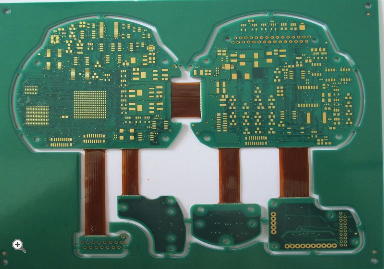PRODUCTS
Designing Reliable High Frequency Boards

Designing reliable high-frequency boards presents a unique set of challenges compared to their lower-frequency counterparts. The higher frequencies involved introduce phenomena like signal reflections, skin effect, and electromagnetic interference (EMI), which can significantly impact signal integrity and overall system performance. Understanding and mitigating these issues is crucial for ensuring the reliable operation of high-speed digital systems, from high-performance computing and data centers to advanced radar and communication equipment. This article will delve into several key aspects of designing reliable high-frequency boards, offering insights into best practices and considerations for engineers facing these challenges.
Signal Integrity
Signal integrity is paramount in high-frequency design. At these speeds, even minor imperfections in the transmission path can lead to signal degradation, distortion, and ultimately, system malfunction. This degradation manifests in several ways, including signal attenuation, reflections caused by impedance mismatches, and crosstalk between adjacent traces. Careful impedance control is crucial; using controlled impedance transmission lines, such as microstrip or stripline, ensures consistent signal propagation and minimizes reflections. These transmission lines require precise dimensions and dielectric material properties to achieve the desired impedance, typically 50 ohms.
Furthermore, proper termination techniques are vital for preventing reflections. Source and load termination are commonly used to absorb reflected signals. Source termination involves placing a resistor at the signal source, matching the characteristic impedance of the transmission line. Load termination, on the other hand, involves placing a resistor at the receiver end. Choosing the appropriate termination type depends on the specific application and trade-offs between signal power and reflection reduction.
Electromagnetic Interference (EMI) and Electromagnetic Compatibility (EMC)
High-frequency signals radiate electromagnetic energy, potentially interfering with other circuits or systems. This phenomenon, known as electromagnetic interference (EMI), can lead to malfunctions and data corruption. Conversely, a circuit’s susceptibility to external electromagnetic fields is termed electromagnetic compatibility (EMC). Effective EMI/EMC design involves minimizing both emission and susceptibility.
Several techniques can be employed to reduce EMI. Shielding sensitive circuits using conductive enclosures or planes effectively blocks electromagnetic radiation. Careful routing of traces, maintaining sufficient separation between signal and power planes, and using ground planes to reduce loop areas, all contribute significantly to reducing emissions. Furthermore, the selection of appropriate components, such as low-EMI capacitors and inductors, is crucial. Proper grounding and filtering techniques are essential for both minimizing EMI emission and enhancing EMC.
Component Selection and Placement
The choice of components plays a crucial role in high-frequency board design. High-frequency components exhibit parasitic capacitance and inductance, which can significantly impact signal integrity. Components with low parasitic values are essential for maintaining signal quality. Surface-mount technology (SMT) components are generally preferred over through-hole components due to their smaller size and lower parasitic effects.
Careful consideration must also be given to component placement. Minimizing trace lengths, especially for high-speed signals, reduces signal attenuation and reflection. Placing components close to each other minimizes the length of interconnects, improving signal quality and reducing crosstalk. Furthermore, components that generate significant EMI should be placed strategically to minimize their impact on other circuits.
Layout and Routing Considerations
The physical layout of components and traces is critical in high-frequency design. Careful planning and meticulous routing are required to minimize signal degradation and interference. Using specialized PCB design software with electromagnetic simulation capabilities is essential for analyzing signal integrity and identifying potential issues.
High-frequency traces should be designed with controlled impedance and minimized length to prevent signal reflections and attenuation. Differential signaling is often preferred for its superior noise immunity compared to single-ended signaling. Power and ground planes are crucial for reducing noise and providing a stable voltage supply. Proper placement and design of these planes are essential for minimizing EMI and improving signal integrity.
Manufacturing Considerations
The manufacturing process significantly impacts the reliability of high-frequency boards. Precise fabrication techniques are required to ensure that the designed impedance and dimensions are accurately achieved. Tolerances in component placement and trace widths must be carefully controlled to avoid significant deviations from the design specifications.
Quality control measures throughout the manufacturing process are critical for ensuring the reliability of the final product. Rigorous testing and inspection procedures are necessary to identify and address any defects or deviations from the design. Employing advanced manufacturing techniques, such as laser direct structuring, can enhance the precision and reproducibility of the manufacturing process, leading to improved board reliability.
In conclusion, designing reliable high-frequency boards necessitates a thorough understanding of signal integrity, EMI/EMC principles, component selection, layout considerations, and manufacturing processes. By carefully addressing these aspects, engineers can significantly improve the performance and reliability of high-speed electronic systems. Employing simulation tools and adhering to best practices throughout the design and manufacturing process is crucial for achieving successful high-frequency designs.
SUBSCRIBE
INQUIRY

